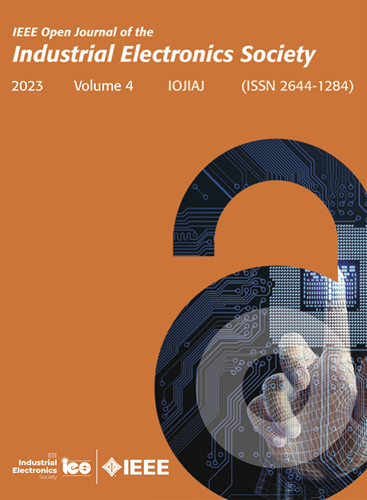用于抑制高速 SPMSM 驱动器电流谐波的基于电流电压角反馈线性化的场削弱控制策略
IF 7.2
1区 工程技术
Q1 AUTOMATION & CONTROL SYSTEMS
引用次数: 0
摘要
电压角调节减弱(FW)策略可以避免输出电压饱和问题。然而,其传递函数的频率特性在工作频率处呈现共振峰,导致电流谐波增加。提出了一种基于电流-电压角反馈线性化的高速表面贴装永磁同步电机电流谐波抑制策略。通过构造线性中间变量和设计电压角变换规律,将非线性电压角调节模型转化为线性控制模型。在此基础上,可以建立等效线性模型的反馈解耦来修改频率特性。根据系统主极点的阻尼比对控制器系数进行优化,最终消除谐振峰。此外,采用积分滑模控制自适应补偿电机参数失配引起的反馈解耦和电压角变换偏差,增强了反馈线性化控制的鲁棒性。实验结果表明,该方法能有效地抑制工作频率下的定子电流谐波,降低电机参数不匹配时的电流纹波。本文章由计算机程序翻译,如有差异,请以英文原文为准。
Current-Voltage Angle Feedback Linearization Based Field Weakening Control Strategy for Suppressing Current Harmonics of High-Speed SPMSM Drives
The voltage angle regulation field weakening (FW) strategy can avoid the issue of output voltage saturation. However, the frequency characteristic of its transfer function exhibits resonance peaks at operating frequencies, leading to an increase in current harmonics. This article proposes a current-voltage angle feedback linearization based FW strategy to suppress the current harmonics of the high-speed surface-mounted permanent magnet synchronous motor (SPMSM). By constructing the linear intermediate variable and designing the voltage angle transformation law, the nonlinear voltage angle regulation model is transformed into a linear control model. Based on this, feedback decoupling in the equivalent linear model can be established to modify the frequency characteristic. The controller coefficients are optimized according to the damping ratio of the system’s dominant poles to ultimately eliminate the resonance peaks. Besides, the integral sliding mode control is employed to adaptively compensate for feedback decoupling and voltage angle transformation deviations caused by motor parameter mismatch, which enhances the robustness of the feedback linearization control. Experimental results demonstrate the proposed method effectively suppresses the stator current harmonics at operating frequencies and reduces current ripples under motor parameter mismatch conditions.
求助全文
通过发布文献求助,成功后即可免费获取论文全文。
去求助
来源期刊

IEEE Transactions on Industrial Electronics
工程技术-工程:电子与电气
CiteScore
16.80
自引率
9.10%
发文量
1396
审稿时长
6.3 months
期刊介绍:
Journal Name: IEEE Transactions on Industrial Electronics
Publication Frequency: Monthly
Scope:
The scope of IEEE Transactions on Industrial Electronics encompasses the following areas:
Applications of electronics, controls, and communications in industrial and manufacturing systems and processes.
Power electronics and drive control techniques.
System control and signal processing.
Fault detection and diagnosis.
Power systems.
Instrumentation, measurement, and testing.
Modeling and simulation.
Motion control.
Robotics.
Sensors and actuators.
Implementation of neural networks, fuzzy logic, and artificial intelligence in industrial systems.
Factory automation.
Communication and computer networks.
 求助内容:
求助内容: 应助结果提醒方式:
应助结果提醒方式:


